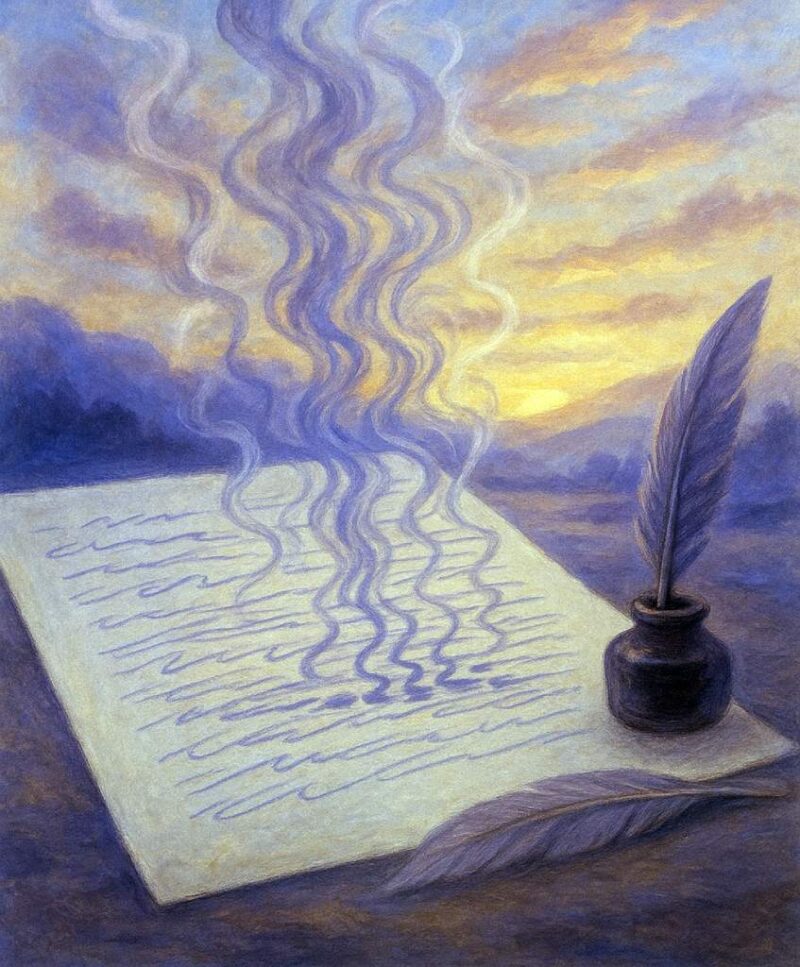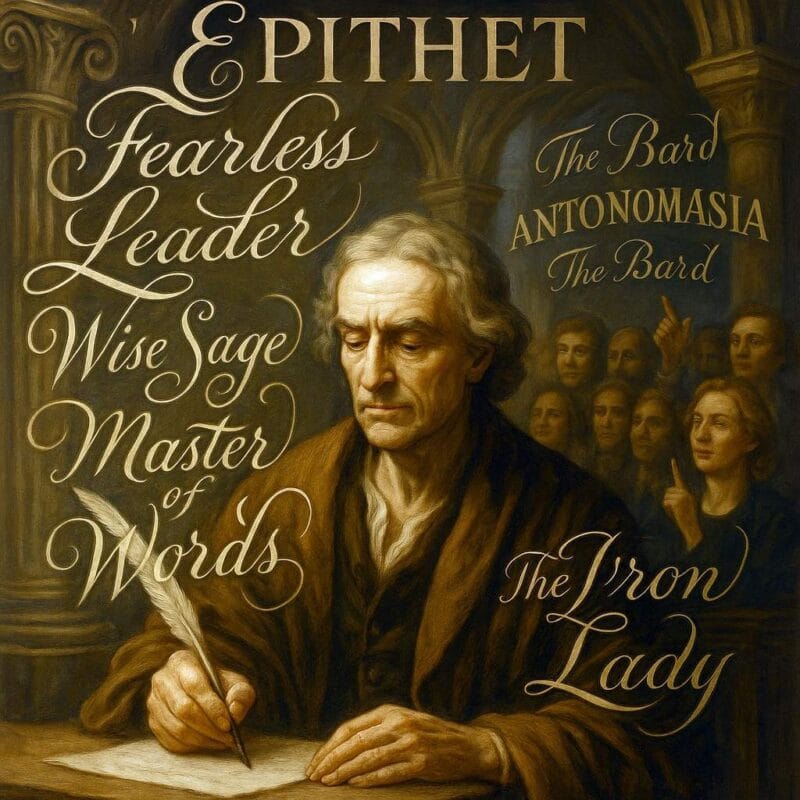There are moments in literature when time seems to slip. A Roman senator checks his wristwatch. A medieval knight tosses off modern slang. A Renaissance court hums with the sounds of electric guitars. These are not errors of haste, or at least not always. They are anachronisms, elements displaced from their proper historical moment. They appear in a setting where they do not belong chronologically. These events can happen intentionally or by oversight. When used deliberately, anachronisms can serve artistic, thematic, satirical, or symbolic purposes. When unintentional, they often reflect historical inaccuracies or a lapse in research.
Types of Anachronism in Literature
Though often associated with historical inaccuracies, anachronism is not inherently a flaw. It may signal negligence, but in literary fiction and drama, it is just as often a strategy. Writers across centuries have used anachronism with full intent, whether to jolt the imagination, provoke thought, or challenge assumptions about the stability of time and history. There are three principal types:
- Parachronism: Something that persists beyond its proper time or continues to appear in a period after its actual decline or obsolescence. For instance, a character in a modern novel writing letters with a quill pen or in a futuristic setting using a rotary phone, without any narrative explanation, might feel out of place.
- Prochronism: Something that appears or is presented earlier than its actual historical emergence. A character in ancient Rome wearing a wristwatch or a steam engine chugging through ancient Babylon would fall under this category.
- Cultural or Linguistic Anachronism: When ideas, expressions, or idioms are used before their actual emergence. For example, characters in a seventeenth-century drama espousing twenty-first-century views on identity or technology can create a conceptual rift. Or, a medieval knight calling something “cool” or speaking in contemporary slang would also qualify.
Purposes and Effects of Anachronism in Literature
- Stylized disruption: Writers sometimes use anachronism to break the illusion of historical realism in order to sharpen the reader’s attention or to reframe the historical setting with modern sensibilities. This often appears in postmodern literature, where historical boundaries are blurred.
- Irony and satire: Anachronisms can also generate humor or criticism. Mark Twain’s A Connecticut Yankee in King Arthur’s Court (1889) places a 19th-century American engineer in medieval England, not to create a realistic time-travel fantasy, but to critique both feudal systems and industrial arrogance.
- Universalization: Some writers intentionally flatten historical distinctions to highlight timeless themes. In Bertolt Brecht’s plays, modern costumes or props might appear in otherwise historical settings to strip away illusion and foreground political ideas.
- Character psychology or metaphor: Anachronism can also function metaphorically, especially in stories concerned with memory, trauma, or psychic dislocation. A character might perceive the world through outdated idioms or habits. In such cases, the anachronism represents a consciousness that has fallen out of step with its surroundings. The result is not confusion but a deepened sense of estrangement, or the illusion that history is layered and unstable.
Famous Examples in Literature
William Shakespeare’s Anachronism as Aesthetic Choice
Perhaps the most famous literary anachronist is William Shakespeare. His Roman tragedies contain clocks that strike and hats that doff. In Julius Caesar (1599), a mechanical clock chimes, though such a device would not exist for well over a thousand years. This is often cited as one of the most famous literary anachronisms. Whether intentional or not, it illustrates how storytelling often takes precedence over historical precision.
Rather than spoil the illusion, these anachronisms contribute to the timelessness of Shakespeare’s political concerns. They serve as a dramatic tool that dilates time and universalizes its political themes. It places classical antiquity and contemporary England in mutual shadow, allowing the past to comment on the present and the present to haunt the past. His Rome is Elizabethan England in disguise. His Athens is a stage for Renaissance anxieties.
Mark Twain’s Political and Satirical Anachronism
When anachronism is used to expose contradictions or critique authority, it becomes a tool of satire. As mentioned earlier, the protagonist in Twain’s A Connecticut Yankee in King Arthur’s Court, who is a 19th-century engineer, finds himself transported to Arthurian Britain. He brings with him industrial know-how, Enlightenment values, and the smug rationalism of his era.
However, the novel is not a simple fantasy, but rather a sustained satire on feudalism, romanticism, and the shortcomings of modernity. The humor arises not merely from contrast but from the layered commentary. Anachronism here is used to dismantle nostalgia. Twain refuses to idealize the past. Instead, he collides it with the technological arrogance of the present and exposes the absurdity on both sides.
Bertolt Brecht’s Estrangement and Defamiliarization
Modernist and postmodernist writers often employ anachronism to create dissonance. It pulls the reader out of temporal immersion and reorients attention toward language, artifice, or the philosophical conditions of the text. As noted earlier, Brecht’s epic theatre stages historical events using modern dress or technology not to confuse the period but to block emotional absorption. In Brechtian drama, anachronism estranges and disrupts comfort. It asks the audience to reflect and not just to absorb.
Similarly, in novels that purposely flatten historical distinctions, anachronism can serve as a means of breaking continuity. A story might invoke premodern rituals alongside modern slang, not to make a statement about accuracy, but to create a sense of layered or broken temporality. Time in such works is treated not as a neutral backdrop but as a substance formed by mood, aesthetic logic, or conceptual intent, without regard for chronological fidelity.
Anachronism in Contemporary Forms
Beyond novels and plays, anachronism finds expression in visual storytelling. Films like Marie Antoinette (2006), directed by Sofia Coppola, pair 18th-century costume with modern music and visual cues. It integrates punk music, Converse sneakers, and pop aesthetics into a period narrative to signal emotional or thematic parallels between the past and present. The technique breaks the surface of period realism and aligns the protagonist’s adolescent confusion and isolation with modern sensibilities, using anachronism as an emotional indicator.
Likewise, graphic novels, alternate histories, and speculative fictions often rely on intentional anachronism to reconfigure time. The effect is rarely one of mere novelty. Instead, these works treat history as something unfinished and permeable, open to revision, revisionism, or outright reinvention.
Anachronism, then, is not simply a matter of something being “out of place.” It raises the question of how time is placed in fiction, how eras interact, how memory alters chronology, and how fiction rearranges the materials of history to serve narrative, symbolic, or ideological ends. To write a world that holds a misplaced object or idea is not necessarily a mistake. Anachronism may be used to break in or remind us that the past is never fixed, the present never pure, and time in literature is never a straight line.
Further Reading
Anachronisms that aren’t – modernity avant la lettre in period literature by Moira Redmond, The Guardian
“Whatever!”: In Defense of Anachronism in Ancient Rome by James Hynes, Literary Hub
Can you provide some examples of anachronisms in literature and history? on Quora
What are some of the funniest or worst anachronism’s you’ve read in books? on Reddit




